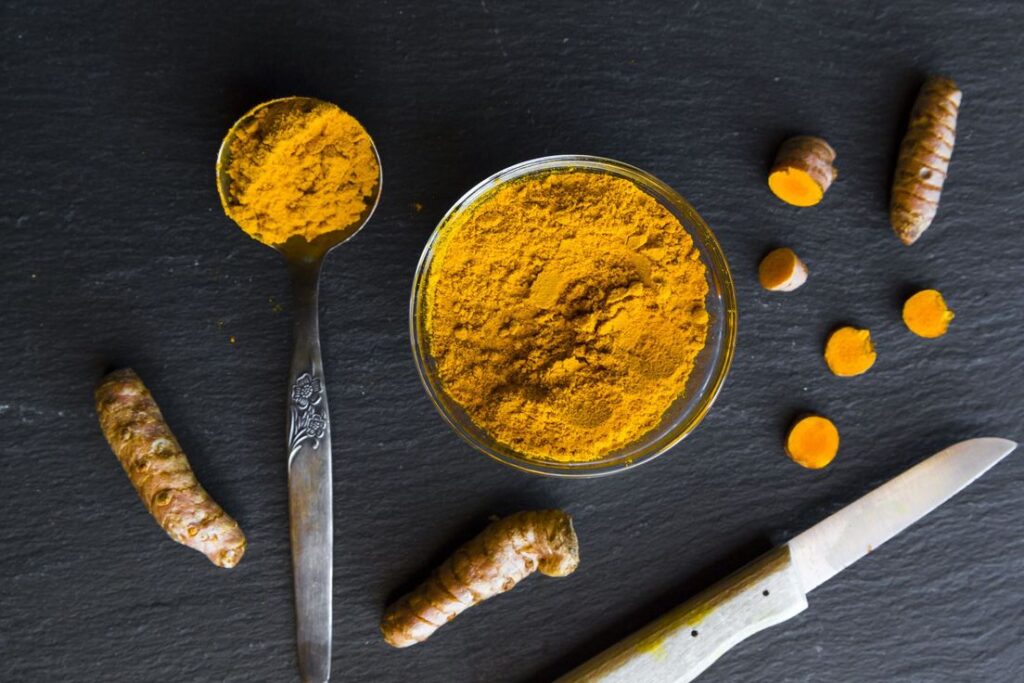
Turmeric, a vibrant yellow spice often found in Indian cuisine, is renowned not only for its rich flavor but also for its impressive array of health benefits. This article delves into the numerous advantages of incorporating turmeric into your diet and provides practical guidance on how to use this versatile spice in your cooking.
Understanding Turmeric: A Brief Overview
Turmeric is derived from the root of the Curcuma longa plant, which is part of the ginger family. Its active compound, curcumin, is primarily responsible for its health benefits and distinctive color. Used in traditional medicine for centuries, turmeric has recently gained significant attention for its potential therapeutic properties.
Health Benefits of Turmeric
1. Anti-Inflammatory Properties
One of the most celebrated benefits of turmeric is its anti-inflammatory effect. Curcumin, the primary active ingredient, has been shown to inhibit inflammatory cytokines and enzymes. This makes turmeric an effective natural remedy for conditions characterized by chronic inflammation, such as arthritis and inflammatory bowel disease.
How to Incorporate:
Add turmeric to soups, stews, and curries. For a more potent anti-inflammatory boost, mix turmeric with black pepper, which enhances curcumin absorption.
2. Antioxidant Benefits
Curcumin is also a powerful antioxidant. It neutralizes free radicals, which can damage cells and lead to chronic diseases. By reducing oxidative stress, turmeric may help protect against conditions like heart disease and cancer.
How to Incorporate:
Incorporate turmeric into smoothies, teas, and homemade sauces. Adding turmeric to your daily routine can support overall cellular health.
3. Cognitive Health
Emerging research suggests that turmeric may support cognitive health. Curcumin has been linked to improved memory and cognitive function, potentially reducing the risk of neurodegenerative diseases such as Alzheimer’s.
How to Incorporate:
Create turmeric-based lattes or include it in your breakfast omelets. Consistent use may contribute to long-term cognitive benefits.
4. Heart Health
Turmeric’s anti-inflammatory and antioxidant properties extend to heart health. Curcumin may help lower cholesterol levels, reduce the risk of heart disease, and improve endothelial function.
How to Incorporate:
Use turmeric as a seasoning in your main dishes or make a turmeric-infused dressing for salads. Regular consumption can support cardiovascular health.
5. Digestive Health
Turmeric can enhance digestive health by stimulating bile production and improving digestion. Its anti-inflammatory properties also help soothe digestive issues such as bloating and gas.
How to Incorporate:
Add turmeric to rice dishes or drink turmeric tea after meals. This can aid digestion and alleviate discomfort.
6. Immune System Support
Turmeric has been shown to support the immune system by enhancing the body’s response to pathogens and reducing inflammation. Regular consumption can help maintain a healthy immune system.
How to Incorporate:
Add turmeric to soups, smoothies, or homemade broths to bolster your immune defense.
How to Use Turmeric in Cooking
1. Turmeric Tea (Golden Milk)
Golden Milk is a popular beverage made with turmeric, milk (or a dairy-free alternative), and spices like black pepper and cinnamon. To prepare:
- Heat 1 cup of milk (dairy or plant-based) in a saucepan.
- Stir in 1 teaspoon of turmeric powder, a pinch of black pepper, and a dash of cinnamon.
- Sweeten with honey or maple syrup if desired.
This soothing drink combines the benefits of turmeric with the comforting qualities of warm milk.
2. Turmeric Rice
Turmeric rice is a simple and flavorful dish. To make:
- Rinse 1 cup of rice and place it in a pot.
- Add 2 cups of water, 1 teaspoon of turmeric powder, and a pinch of salt.
- Bring to a boil, then reduce heat and simmer until the rice is cooked.
The turmeric adds a vibrant color and a mild, earthy flavor to the rice.
3. Turmeric-Infused Oil
Turmeric-infused oil can be used as a base for cooking or as a flavorful addition to salads. To prepare:
- Heat 1 cup of olive oil in a saucepan.
- Add 2 tablespoons of turmeric powder and stir gently.
- Allow the mixture to infuse over low heat for 10 minutes.
- Strain the oil through a fine mesh sieve and store in an airtight container.
Use this oil to sauté vegetables or as a drizzle over dishes.
4. Turmeric Marinades
Turmeric can enhance the flavor of marinades for meats and vegetables. To make a simple marinade:
- Mix 2 tablespoons of turmeric powder with 1/4 cup of olive oil, 2 tablespoons of lemon juice, and your choice of herbs and spices.
- Use this marinade to coat chicken, fish, or vegetables and let it sit for at least 30 minutes before cooking.
The turmeric imparts a vibrant color and a unique flavor to your dishes.
5. Turmeric Smoothies
For a health-boosting smoothie, blend:
- 1 cup of spinach or kale.
- 1 banana.
- 1/2 teaspoon of turmeric powder.
- 1 cup of almond milk or other dairy-free alternatives.
This smoothie combines the benefits of turmeric with the nutritional value of leafy greens and fruit.
Conclusion
Incorporating turmeric into your diet can provide a wide range of health benefits, from reducing inflammation and oxidative stress to supporting cognitive and heart health. By experimenting with turmeric in various recipes, you can enhance your overall well-being while enjoying delicious and nutritious meals.
